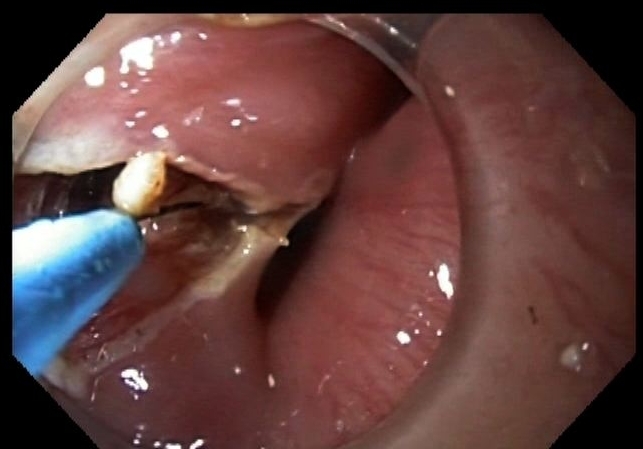|
|
Back to Annual Meeting Posters POEM-Based Endoscopic Treatment of Zenker's Diverticulum: Minimal Incision Cricopharyngeal Myotomy (cpm) Luke Mccrone*1, Kondal R. Kyanam Kabir Baig2, Victoria Gomez2, John D. Casler3, Timothy a. Woodward2 1Internal Medicine, Mayo Clinic Florida, Jacksonville, FL; 2Gastroenterology, Mayo Clinic Florida, Jacksonville, FL; 3Otorhinolaryngology, Mayo Clinic Florida, Jacksonville, FL
Background: Zenker's diverticulum (ZD), a posterior outpouching of mucosa through transverse cricophargyngeal muscle fibers, has a reported prevalence of 0.01% to 0.11%. ZD is associated with marked morbidity, with symptoms ranging from halitosis and food regurgitation to aspiration pneumonia and cachexia. Therapeutic management of ZD has evolved from open diverticulectomy to rigid endoscopy, and, most recently, flexible endoscopy utilizing cricophayrngeal myotomy (CPM) with diverticulotomy. Traditional open surgical and rigid endoscopic methods have been associated with high rates of symptomatic resolution, with acceptable rates of recurrence. There are, however, associated complications of bleeding and perforation, with these risks being amplified in this comorbid, aged patient population. Building upon the per oral endoscopic myotomy (POEM) A POEM-based minimal incision cricopharyngeal myotomy (CPM) technique has been developed, using a needle knife to dissect the cricopharyngeal bar by way of a 8 to 10 mm incision within the confines of the mucosa without an extended diverticulotomy (See image).
Dysphagia Score: 0=no dysphagia; 1=able to swallow some solid foods; 2=able to swallow only semi-solid foods; 3=able to swallow liquids only; 4=total dysphagia.  Myotomy within minimal incision. Back to Annual Meeting Posters
|
||||||||||||||||||||||||||||||||||||||||||||||||||||
© 2025 Society for Surgery of the Alimentary Tract. All Rights Reserved. Read the Privacy Policy.

